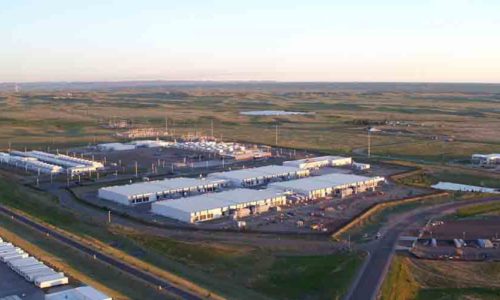Microsoft Corp. has announced its largest wind power deal to date: 237 megawatts (MW) that will power their data center outside of Cheyenne. This will bring Microsoft’s total investment in wind energy projects to more than 500 MW.
This deal will combine a 178 MW from the Bloom Wind project in Kansas with a long-term deal with Black Hills Corp. to purchase , 59 MW from the Happy Jack and Silver Sage projects, which are located adjacent to the Cheyenne data center. The combined output of the Black Hills Energy project to cover the annual energy used at the data center.
“Our longstanding partnership with Microsoft productively led to this landmark collaboration. This collaboration provided them the opportunity to utilize significantly more renewable energy while still ensuring the reliability they’ve come to expect through our energy infrastructure and generation resources,” said David R. Emery, chairman and CEO of Black Hills Corp.
Microsoft and Black Hills Energy also worked together to create a new tariff, available to all eligible customers, that allows the utility to tap the local datacenter’s backup generators, thereby eliminating the need for Black Hills Energy to construct a new power plant. The tariff received approval from the Wyoming Public Service Commission in July.
In addition, Microsoft has contracted with Allianz Risk Transfer (ART) to fix its long-term energy costs by purchasing 178 MW from the Bloom Wind project in Kansas. The project is the first to use a novel structure developed by ART to offset high upfront costs associated with the creation of large-scale wind projects. Microsoft is the first buyer to participate in this structure, which has the potential to bring clean energy projects online faster.
“It is important for investors in renewable energy projects to secure long-term, stable revenues, and our structure does just that,” said Karsten Berlage, managing director of ART. “We are thrilled to be partnering with Microsoft on this groundbreaking project.”
“We are constantly looking for new ways to approach energy challenges and avenues of engagement with our utility partners,” said Christian Belady, general manager of cloud infrastructure strategy and architecture at Microsoft.
“The team worked closely with ART to come up with a completely new model to enable faster adoption of renewables. Likewise, the tight engagement with Black Hills created the opportunity for Microsoft’s datacenter to become an asset for the local grid, maintaining reliability and reducing costs for ratepayers. This kind of deep collaboration with utilities has great potential to accelerate the pace of clean energy, benefitting all customers – not just Microsoft.”

